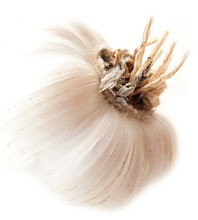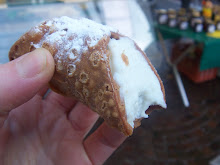

Titled France’s culinary capital, gastronomy is an inseparable part of Lyon’s identity. The city has over 1,000 restaurants, a food trade exhibition, a school of culinary art and the Halle de Lyon indoor Market. Although we were shopping for a picnic lunch, breakfast mustn’t be skipped. This is how I found myself enjoying oysters, Champagne and a whelk, bulot, at 9am.
Best. Breakfast. Ever.

This was followed by an unsurprising Best. Lunch. Ever.
On the doorstep of a stone heavy castle, by a lake in the Bresse countryside a table was laid with market fresh fruit and vegetables, a pungently French cheese platter, a cured meat platter, and, since we were in Bresse, a Bresse chicken with its characteristic white feathers, smooth blue feet and a red crest bearing the colors of the French flag. Raised on grassy pastures with an area of 10sq/m per chicken, the chickens feed of the grassy land as well as corn, wheat, cereals and dairy from the Bresse area. The poultry is slaughtered using techniques that keep it whole without external incisions, prolonging its preservation period and making for a fascinating piece of trivia information.
It was lovely. And then it rained. As it does on July.

Dijon
It was during the 14th century that the Duchy of Burgundy became the richest and best administrated state in western Europe. During this period the towns prospered and Dijon became an important market town. This is also where I had a French kiss in the form of a thinly sliced, raw St Jacque scallop.
Its Dijon, so naurally there were a lot of snails, L’escargot, enough mustard to last me for a few years, crème de Cassis, spice bread and head cheese, a cold terrine of pieces from the head of pigs (happy, free range ones), and it is as aesthetic as it sounds. In section view.
Dijon is also where I had a gallette filled with tomatoes, bell peppers, onion, and cubes of bacon, folded like an envelope, and addressed to me. With cider, bien sur.

Epoisses is a washed rind cheese made of milk curd.
Cylindrical in shape with either plain or parallel surfaces, the Epoisses could either have a shiny and smooth crust or slightly rippled. Its color can vary from orange- ivory to brick red, caused by the pigmentation of the surface bacteria depending on the maturation period. The cheese should be light beige nearer the rind with a white centre.
Characterized by a strong, persistent, flowery aroma with woodland undergrowth the paste should be creamy, melting in the mouth with a slightly crumbly heart, and balanced fruity and dairy flavors.
Wonderfully accentuated on a slice of a Dijonnaise spice bread, Pain d’epice.

With 99.5% made of Oak wood, France supplies 80% of the worlds’ barrels.
Stepping into the the Francois Freres Cooperage in Saint Romain was a journey through time; a tradition, technique, skill, history, and well, yes, a terroir are all captured in these wooden barrels. Hollywood could not build a better set or design better lighting.
The production of barrels begins in the forests of the Loire valley; Oak trees from renewable sources, aged between 120-280 years are carefully selected. The trees are cut to 100cm logs and split by hand. The planks are then sun dried, in order to remove the humidity in the wood, for several years.
The planks are molded by hand to barrels, that are then placed over an open flame and are ‘toasted’ to varying degrees, giving the wine an oak accent based on the temperature and length of the toasting process.
Next a bung hole is made, the circular heads are inserted and the final hoops give the finishing touch, made to the clients’ specification.

The last day began early with a café and an almond croissant, followed by a visit to the market in Dijon for grocery shopping; berries, apples, peaches, yogurt, wholesome bread, lentils, roasted chicken, a spring roll, and Epoisses cheese. What followed was an 11-hour bus ride back to Italy through the alps, and a pleasurable one at that if we ignore the strong cheeses that were brought on board. It was a foodie bus, so complaints. I had French food for the next few days, so I could pretend for longer.









No comments:
Post a Comment